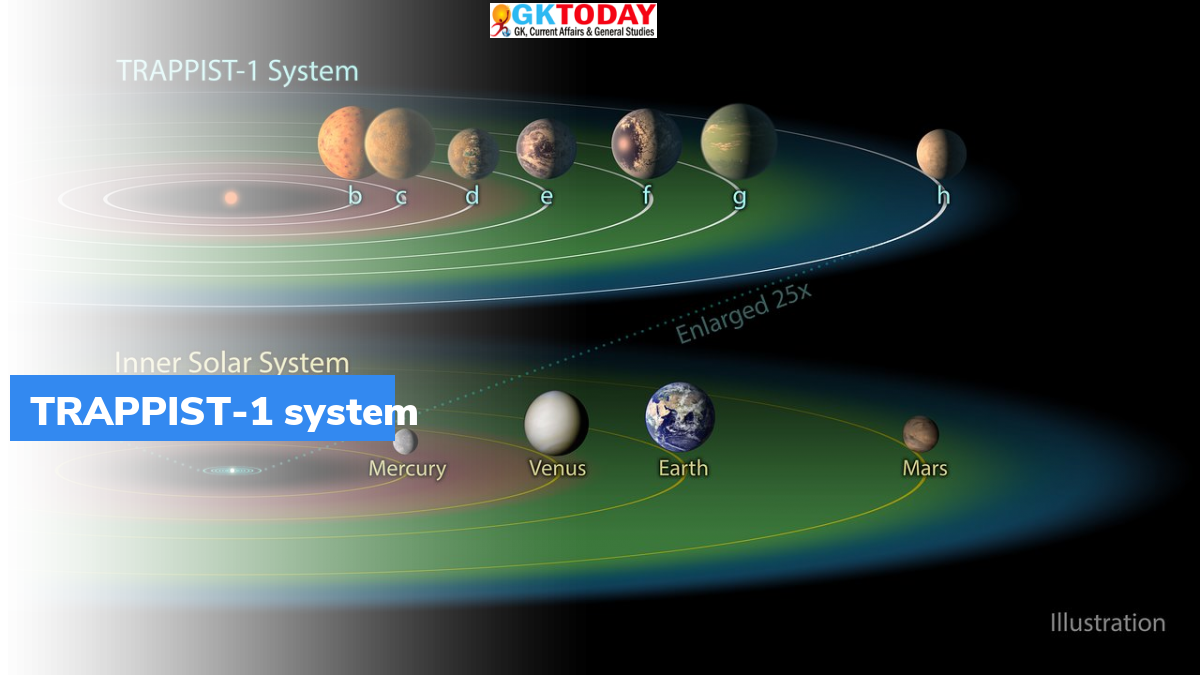TRAPPIST-1 system
TRAPPIST-1 is a red dwarf star in the Aquarius constellation.
About TRAPPIST-1
- TRAPPIST-1 was earlier known as 2MASS J23062928–0502285 or K2-112, because it was spotted with the Two Micron All-Sky Survey (2MASS). It was discovered in 1999 by astronomer John Gizis. It is older than the solar system, as it is 7.6 billion years old.
- Its mass is about 9% of the Sun and its radius is slightly larger than the Jupiter. It has a surface temperature of about 2,290 °C and is about 39 light years from the Sun.
- In 2016, scientists found three planets orbiting this star using the Transiting Planets and Planetesimals Small Telescope (TRAPPIST) in La Silla Observatory, Chile. Scientists named this star TRAPPIST-1 in honor of this telescope.
Planets orbiting TRAPPIST-1
- In 2016, it was announced that NASA’s Hubble Space Telescope has found that two planets (TRAPPIST-1b and c) were unlikely to have hydrogen-dominated atmospheres. This shows that these planets could be rocky and possibly have presence of water.
- In 2017, it was announced that NASA’s Spitzer Space Telescope discovered that the system has seven planets. It was believed that around three planets are located within the habitable zone of TRAPPIST-1.
- A close study of the seven planets conducted in 2018, suggested that some planets could harbor far more water than the oceans of Earth.
- However, there is no clear evidence whether the planets have atmosphere or not. It is difficult for planets around TRAPPIST-1 to hold onto atmosphere because radiation of TRAPPIST-1 will strip away large amounts of atmospheric gases.
James Webb Telescope
James Webb Telescope will be directed towards the TRAPPIST-1 system. It will look for signs of atmosphere on the planets of TRAPPIST-1.
Month: Current Affairs - March, 2022
Category: Science & Technology Current Affairs


